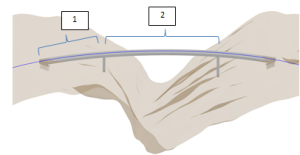Key terms
This section provides definitions you should be familiar with to understand how to create and use object types in Building and Civil Assemblies.
- BIM
- Building Information Modeling. Also known as modeler. A digital representation of physical and functional characteristics of a building. The BIM enable sharing reliable information throughout the lifetime of a building, defined from conception to demolition.
- BIM manager
- Person in charge of the Building Information Modeling management. This person is responsible for capitalizing and sharing the company knowledge, structuring a project and making sure the delivered model complies with the original expectations and the standards. For more information, see Setting Up Procedure (BIM Manager).
- BIM technician
- A CAD technician whose position involves a specialized technical knowledge in the construction or software domains.
- IFC
- IFC stands for Industry Foundation Classes. It is an object-oriented file format used by the AEC industry to exchange and share information between software products. For more information, see IFC.
- Business Object
- An object can be a feature (3D shape) or a PLM Reference. Also referred to as object. Business objects are created by BIM technicians
- Specification Feature
- Also referred to as component specification feature, or component specification, or specification, or anchor (in Smart Mechanical Components). It is an extended axis system feature containing technological and geometrical information needed to automatically generate 3D models in part and product contexts. This type of feature specifies an object in terms of attributes and main characteristics. A specification can be exposed at feature-level as user feature or at product-level.
- User Feature
- A template that lets you model a geometrical feature based on the composition of other features. It is a template that works at the 3D shape representation level. From a collection of features (geometry, literals, formulas, constraints, etc.), a user can create his own feature. The result is a Part Design feature or a Generative Shape Design feature that can be reused in the design of another 3D shape representation.
- Engineering Template
- A representation that allows BIM managers or project leaders to create structured reusable components that any user can access at design time. It works at the product level.







